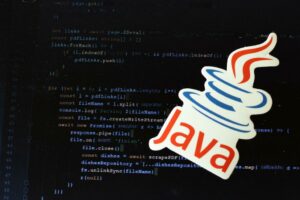It is a type of testing that guarantees an application’s basic and critical features are working fine before doing exhaustive testing or rigorous testing. They usually are run once a day at least and cover various functionalities of the system. They are more details than the smoke tests and cover more scenarios of the application including the non-critical ones. Let’s go through each part of the https://www.globalcloudteam.com/, so we’re clear on just what we’re talking about. Nonexhaustive software analysis is a way to look at the things that make our software tick rather than trying to find every bug. This is important because looking at any other bugs without understanding if the core components work is a waste of time.
In this tutorial, we will get to know about smoke testing, its features, and its advantages. In PractiTest, you can initiate the run of smoke tests, either in manual or automated ways. In Figure 4, you can see an example of smoke tests that are ready to run. This case could perhaps be a smoke test or regression test, but could also be an edge case found in a larger set of functional tests. Since those early days, smoke testing has been used in a variety of contexts, including automotive repair, heating and cooling systems, and now, software applications.
How to Report and Assess the Results of Smoke Testing
If the smoke test is a pass then the build can be further sent to the testing process else the build is rejected. Smoke Testing is a type of software testing which is usually performed on initial software builds to make sure that the critical functionalities of the program are working absolutely fine. Instead of having repeated test manually whenever the new software build is deployed, recorded smoke test cases are executed against the build. It verifies whether the major functionalities still operates properly. If the test fails, then they can correct the build and redeploy the build immediately. By this, we can save time and ensure a quality build to the QA environment.

Before understanding the smoke and sanity testing, it is suggested to understand Build and Release and how these terms are related to the Smoke and Sanity Testing. And this is a great article discussing the benefits of integration testing (long test) over unit testing. Because sanity testing is more in-depth and takes more time, in most cases it is well worth to be automated. Remember, working on bugs when the critical portions of a program don’t work is a waste of time. While many organizations take smoke testing to be a mere acceptance criteria, it is the first step of quality assessment.
Smoke Testing Cycle
Full test suites can take a long time to run, so after a change many teams run some quick to complete tests to detect significant breakages. The smallest components of this application that needs to be unit tested could be a function that performs addition, another that performs subtraction and so on. All these small functions put together makes up the calculator application.
- As a preliminary check of software, smoke testing finds basic and critical issues in an application before more in-depth testing is done.
- Just imagine a situation where you have a testing team consisting of 10 members.
- Smoke Testing normally takes a maximum of 60 minutes and should be done for every new build, every new release even if that means doing it on a daily basis.
- Without smoke testing, major issues could slip through the cracks, leaving the chance for those issues to cause larger problems down the line.
Smoke testing is performed on new build and will get integrated with old builds to maintain the correctness of the system. Before performing smoke testing, QA team should check for correct build versions. Both sanity and smoke tests are similar in nature and can be confused.
Common Continuous Testing Pitfalls In DevOps And How To Avoid Them
To successfully implement smoke testing, an organization needs to understand its characteristics. For not getting this problem in the future, the development team manager, the testing team manager, will take the customer login and do one round smoke testing definition of smoke testing. Early and simple tests can help avoid these risks while at the same time reducing the cost of fixing the defects. Since defects can cause a ripple effect in software, a defect found and fixed early is a good thing.
In the smoke testing, we only focus on the positive flow of the application and enter only valid data, not the invalid data. In smoke testing, we verify every build is testable or not; hence it is also known as Build Verification Testing. Smoke test results have the unique requirement of rapid reporting. When a new build fails when smoke tests are performed, the failures must be reported and fixed immediately.
When Smoke Testing is performed?
Tools for automated smoke testing include Selenium and PhantomJS. Selenium is open source software that automates and runs testing parameters on multiple web browsers. Selenium automates control of browsers on various operating systems as well. PhantomJS is an option for integration and automation with continuous integration tools, such as Jenkins and TeamCity.
Regardless of its origin, however, smoke testing is a crucial component of your building process. This smoke testing tutorial covers what smoke testing is, its importance, benefits, and how to perform it with real-time examples. When the stable build is installed anywhere (Test Server, Production Server, and User Acceptance testing), we do smoke testing to find the blocker bug. These tests are very confirmatory in nature, with the main objective of making sure the functions under test are working correctly and do not “break the build”. These tests are not designed to test variations of conditions, such as boundary value tests. Enables quality improvement as major issues are detected and corrected much earlier in the software test life cycle and thereby increases quality.
Dos and Don’ts in Test Automation Moving Forward To 2023 PractiTest
Smoke testing is carried to ensure the navigation of critical paths is as expected and doesn’t hamper the functionality. Once the build is released to QA, high priority functionality test cases are to be taken and are tested to find the critical defects in the system. If the test fails, the build is rejected and sent back to the development team for correction.

In other words, while smoke testing is done to verify the stability of a build, sanity tests are done on stable builds. Sanity testing is also a subset of regression testing, while smoke testing is a subset of acceptance testing. Smoke testing is usually done whenever the new functionalities of the software are developed and integrated with an existing build.
Generating visibility into your projects, using PractiTest graphs and reports
Smoke testing is sometimes known as “Confidence Testing” or “Build Verification Testing.” Smoke and sanity testing are both performed after a software build to identify whether to start testing. They can be executed separately or at the same time – sanity being immediately after smoke. In smoke testing, the test cases usually cover the most important functionalities of the system. The basic objective of this method of testing is not to perform exhaustive testing, but to verify that the critical functionalities of the system are working fine.
Turbolte